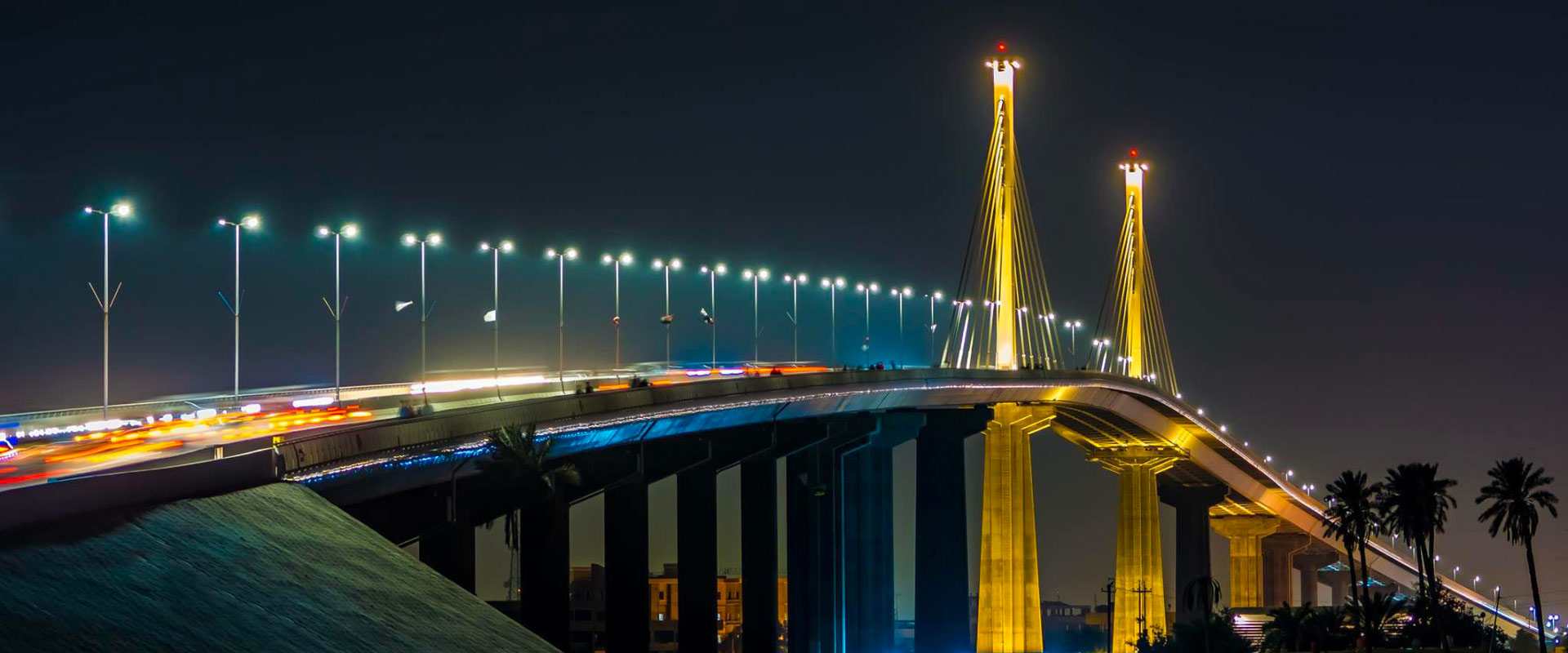On August 10th, 2017, the Muhammad Baqir Al-Sadr cable-stayed bridge was inaugurated in Basra. The project was commissioned by the Governorate of the Iraqi city and was built in a record time of 26 months. It rises on the Shatt al Arab, the river originating from the confluence of the rivers Tigris and Euphrates.
Four years after its inauguration, the combination of the soaring poverty rate and the effects of the Covid-19 pandemic crisis, together with the deep-rooted problem of drinking water shortage, unfortunately continue to delay the rebirth of the city of Basra.
On its anniversary, this journal traces the steps that led to the construction of the Muhammad Baqir Al-Sadr Bridge, a symbol of great hope for a future of peace, brotherhood and economic development. It is dedicated to Basra and all its inhabitants.
Basra is located near the Persian Gulf along the confluence of the Tigris and Euphrates and has represented for centuries the main commercial crossroads between the Mediterranean and the East. It was one of the most important cities in the Arab world, indeed it was known as the "Venice of the East" also thanks to the presence of the numerous bridges and canals where the commercial exchanges of goods from all the Gulf countries took place, from Egypt and India.
In recent decades, at the expense of its ancient status as a prosperous city and despite the potential wealth derived from oil extraction, Basra has not been able to relaunch itself, facing a dramatic economic and social decline. The poverty rate has reached 40%, the electricity infrastructure has collapsed and freshwater reserves are contaminated by pollution and by the rising of salty waters from the Persian Gulf.



If the siege of Basra during the war against Iran in 1987 and the harsh fighting during the occupation of the city by British troops in 2003 had caused immense damage, today the continuing internal tensions between Sunnis and Shiites also contribute paralyzing the development of Basra. In recent years, the situation has been aggravated by the massive exodus of displaced people from neighboring governorates, at the center of the ISIS attacks.
The Muhammad Baqir Al-Sadr Bridge was the first planned project for urban reconstruction and economic-social revitalization of the city and the entire Basra Governorate, a highly strategic area thanks to the enormous oil reserves and its key position between the Kuwait and Iran. According to the urban plans, therefore, the bridge was to connect Basra to the delicate road artery leading to the Iranian border, becoming the main access point to the city.
Primo Levi, The Wrench
In February 2013, after a long negotiation, Maeg was awarded the construction of the bridge over the Shatt Al Arab with a contract worth 74 million dollars. Furthermore, in the role of General Contractor, Maeg assumes responsibility for the entire project and manages the operations of both design and execution phases of the work: from the supply of materials to labor, from equipment to services.
The economic relevance of the contract and the complexity of the role of General Contractor constitute an important test for the company. The management effort required to complete the project, moreover, determined by the geographical distance, the socio-political complexities, and the labyrinthine Iraqi bureaucracy, make the construction of the bridge a great experience that Maeg faces relying on all the skills and professional skills at his disposal.
Maeg wins the project by presenting a solution that involves a cable-stayed bridge 1,188 meters long and 21.5 meters wide, with two main antennas of 40 meters to support the stays and 25 concrete pylons, planted at a depth of 50 meters. The cable-stayed solution is preferred due to the numerous construction advantages that this allows, such as reduced installation times, weight savings of the entire structure and optimization in terms of use of materials.










The bridge assembly method is established considering two decisive aspects: concentrating the assembly activities of the deck in a safe and equipped area and avoiding interfering with river traffic during the construction of the bridge. Therefore, two distinct construction sites were built near the banks to preassemble the entire structures, to be launched afterwards from both shores.
Alfeo Ortolan, Founder of Maeg Costruzioni SpA
CREDITS
Video:
Supreme Committee for Delivery & Legacy, Road to 2022, AFC Asian Cup
Images:
zaha-hadid.com, fifa.com, thestadiumbusiness.com, aljazeera.com, sc.qa, dohastadiumplusqatar.com
PARTNER




